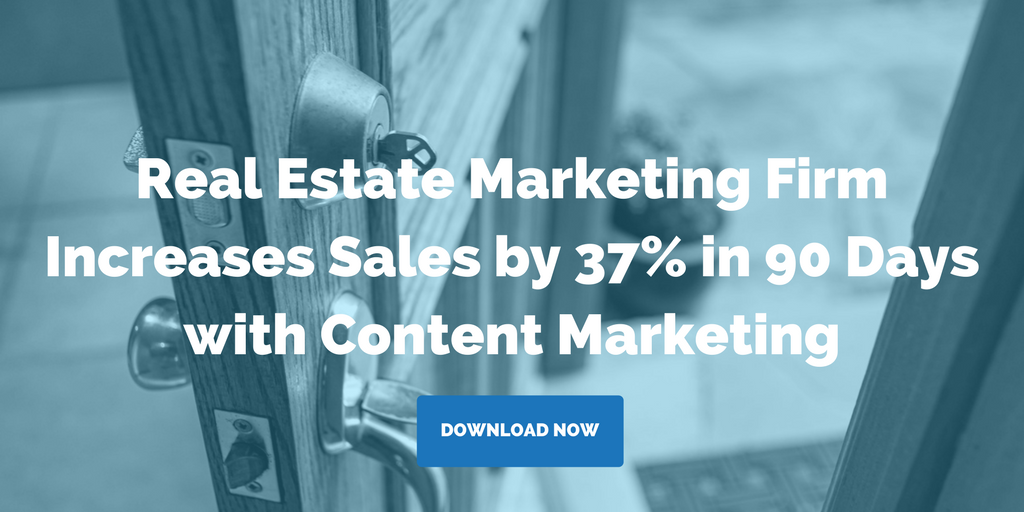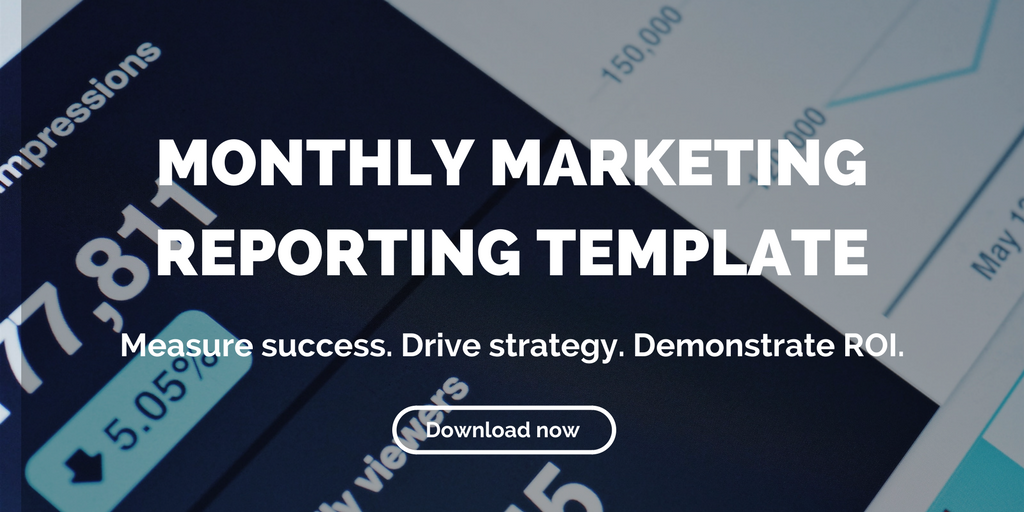Posts Tagged "content marketing strategy"

6 Social Media Don’ts for Property Management Companies
Committing these social media don’ts when managing a property may get you in a heap of trouble.
It’s easy to get bombarded with suggestions on how to interact with your audience on social media. In fact, social media can be particularly tricky for property managers: for example, many tenants will bash your property for all the world to see for small issues or in an attempt to get a free month of rent.
But amid the endless barrage of ideas for what to do, it’s worth remembering that not all social media engagement is equal. Just as shying away from social media isn’t a good strategy, it’s also important to remember what not to do.
Let’s look at 6 specific don’ts for keeping your proverbial foot out of your business’ mouth online:
Social media don’ts for property managers
1. Don’t assume that just because you’re online, offline rules of communication and conduct don’t apply.
It may seem obvious, but it’s all-too-often forgotten. This is a good rule, and an easy metric by which to judge any content before posting: Your interactions with current and potential tenants online should measure up to professional interactions you would have in person.
2. Don’t re-post, re-tweet, re-gram, or re-share external content without a thorough check first.
Re-posting content that’s of interest to your audience is a great way to promote discussion and engagement, especially for the highly social business of real estate marketing. But don’t get sloppy. Remember that even if content didn’t start with you, if it’s posted on your property’s social media accounts, it represents your business, and can reflect on your property and professionalism. Make sure content is well-researched and from reliable sources. Want to re-post something controversial? Just be sure to include a disclaimer or explanation in your post.
3. Don’t forget that emotional intelligence is just as important for businesses as for individuals.
This one is especially key for real estate marketers, since real estate decisions are so personal. Never forget that behind every social media account is a human being. The bottom line: “Bring emotional intelligence to your social media management. Take the time to address any issues with compassion and understanding.”
4. Don’t ignore comments.
Social media is all about engagement with your audience. Yes, responding to every comment takes time and resources, but it is well worth the effort. A comment ignored sends the message that you don’t feel that your reader’s question, concern, or observation is important. Use comments as the opportunity they are to interact with your followers, and show them that you are ready and willing to address any issues they may have.
5. Don’t delete negative comments.
Another cardinal sin for real estate. Once it’s online, trust that people have seen it. Deleting a complaint will only make your business appear insensitive and evasive. Addressing negative comments demonstrates that your company is proactive about resolving issues and taking care of your tenants.
6. Don’t forget the basic principles of common sense and good judgment.
This one comes from John P. David of David PR Group. It seems like another obvious one, but people and businesses violate this principle all the time. Always have at least two pairs of eyes on everything you are going to post, and anything remotely controversial should be thoroughly vetted by as many people as necessary. When in doubt, David says, don’t post.
If your company has committed any of these social media don’ts in the past, don’t panic. These platforms offer an ideal place for renewing and tweaking your image. Invest in the creation of a good social media policy. Don’t give the enormously important task of social media management to a summer intern. And, for goodness’ sakes, remember you’re a human talking to other humans.
Related posts:
-
Social Media Can Be a Strategic Weapon in Real Estate Marketing
-
4 Tools for Determining the Best Time to Post on Social Media for Your Property
-
4 Steps to Building a Successful DIY Content Marketing Strategy for Real Estate
Posts Tagged "content marketing strategy"

6 Tips for Creating Mobile-Friendly Marketing Emails
The majority of your prospective buyers and tenants are reading emails on their phones, so you’d better be sending mobile-friendly marketing emails.
My mornings are probably much like most of yours: As soon as my sleepy fingers can silence my alarm on my cell phone, I open up my email, before my feet even hit the floor. I will check my email again while I’m eating breakfast — and possibly a third time while I’m in line waiting for my coffee.
With the explosion of smartphones, more and more people are taking to their phones over their desktop computers to check email. It’s not hard to understand why; our phones are with us all day long. In fact, 54% of emails are now being read on a mobile device, a 40% increase in the last five years.
When a majority of your audience is reading your marketing emails on their mobile devices, it’s imperative that you’re creating emails that are optimized for mobile viewing.
Here are 6 essential tips for creating mobile-friendly marketing email campaigns.
1) Keep them short and sweet.
When writing copy or email, your content should be to the point. But this is especially true for mobile-friendly emails. Small screen size and increased likelihood the user is multi-tasking are just two reasons why efficiency is key.
Create messages that are easy for the eye to scan. Use bullet points or short paragraphs to keep the reader engaged. Strip out anything that’s not totally necessary, and drive recipients to landing pages for more information.
2) Less is more.
Not all mobile devices include your images. Android users, for example, will find their email images are off by default unless they change their settings. It’s also important to remember that large image files take longer to download. And nothing drives people away like slow load times.
What does this mean for mobile-friendly emails? Your content needs to be front and center, with less reliance on images. This can be tricky for real estate marketing, where the visual is key. But if your content is snappy and intriguing, readers will follow their curiosity and peruse images you link to.
3) Get to the point.
A typical desktop inbox displays about 60 characters of a subject line, while mobile devices show just 25-30 characters. Mobile-friendly emails place the offer or call-to-action at the beginning of the subject line where it’s more likely to be seen.
4) Get responsive.
We’ve all opened an email or webpage on a mobile device and had to squint to read it. Web content designed for desktop screens are barely legible when shrunk down to this size.
Try using a responsive template to ensure that readers are viewing your email the way you intended. Responsive emails use fluid tables and images to make content flow across different screen sizes.
5) Button it up.
I know it’s not just me and my fat fingers: Links are difficult to click on mobile devices! Instead try using buttons for your calls-to-action.
Make sure any CTA buttons are toward the top of your email, so readers know what you want them to do right away. Also, buttons should be large in size and surrounded by plenty of white space so readers don’t accidentally click on something else.
6) Test your work.
After making your emails as mobile-friendly as possible, don’t forget the most important step: testing. Send out test emails to your coworkers that use different devices to ensure that your emails look exactly like you want. With 98.4% of users reading email on Android and iOS, those operating systems should be your main focus.
Don’t lose readers before they’ve had a chance to open, read, and engage with your emails. Use these 6 tips for more mobile-friendly emails to help improve engagement rates, lead conversion, and profitable investor action.
Related posts:
-
Paid Digital Advertising: A Beginner’s Guide for Real Estate Marketers
-
4 Steps to Building a Successful DIY Content Marketing Strategy for Real Estate
-
This Is the First Thing You Should Do in Real Estate Marketing
Posts Tagged "content marketing strategy"

Paid Digital Advertising: A Beginner’s Guide for Real Estate Marketers
Paid digital advertising can help accelerate your content marketing efforts so that your content gets in front of prospective buyers and renters faster than would happen organically.
We are strong believers in content marketing. Build it, and they will come — or, in content-marketing speak, publish quality content, and buyers will come to you. But, content marketing takes time to bear fruit. There’s not much you can do about that.
Except paid digital advertising.
By investing in paid digital advertising, you can boost the reach of your posts, display ads, and videos. Pair quality content with a comprehensive digital advertising strategy, and you will be in a position to drive more traffic, create more brand visibility, and sell or lease more properties.
Your peers understand this. Within the first quarter of 2017, Facebook, Instagram, Twitter, LinkedIn, Snapchat, and Pinterest saw a 61.5% increase in paid media spend. And that’s only going to increase through 2018.
So where do you start? Here are three places to get started in using paid digital advertising to help market your property.
3 paid digital advertising platforms
1) Display ads
Display ads are the paid advertisements that appear in front of users on website pages in the form of graphics. Unlike text-based ads, display advertising relies on elements such as images, audio, and video to communicate an advertising message. Display ads are commonly referred to as banner ads, but they don’t always take banner form. They can come in all shapes and sizes, and can appear anywhere on a webpage.
Benefits: Because digital ads are visual, they can be customized with your logo, message, images of properties, or an offer to help increase brand awareness. You have the ability to use graphics, video, and audio to really stand out and highlight your properties. Display ads also allow users the ability to target a specific audience. You control which sites they appear on, which geographic area they appear in, and which demographic or niche market they appear to — all valuable tools for the real estate marketer.
2) Sponsored social media posts
There are sponsored posts plus other ad opportunities like Facebook like campaigns, website click ads, and lead ads.
Social media is a natural place to begin if you’re looking to get into paid digital advertising, particularly for the real estate industry. A good starting point is Facebook. The social media giant’s social ad revenue was more than $9.16 billion in Q2 2017 alone. And it doesn’t stop there. Twitter brought in $548 million in social media advertising revenue in the same period, and Snapchat is expected to reach over $895.5 million in ad revenue in 2017.
More specifically, three of the most useful types of sponsored social media posts for real estate marketing are:
- Facebook Like Campaigns: These campaigns are aimed directly at increasing the number of likes for a Facebook page, targeting people who might be interested in your brand and the posts you share on Facebook.
- Facebook Website Click Ads: These are ads that point people on Facebook to your website, or even the listings for specific properties.
- Facebook Lead Ads: These ads allow users to request information, estimates, or newsletters without leaving Facebook. Requiring fewer steps of prospective leads increases conversion rates.
Benefits: Running paid social ads allows you to reach a large audience at a low cost. You pay based on the type of ad you’re running. For example, if you’re looking to drive brand awareness, you’ll incur a CPM (Cost Per 1,000 Impressions). And not only are the ads relatively inexpensive to run, they’re not expensive to create. You get all of this plus the ability to target your specific audience, reaching people that are interested in learning about the properties you have to offer.
3) Google AdWords
Google AdWords places your website as one of the top results on a search engine results page (SERP) when a user searches for certain keywords of your choice. When a user clicks the AdWords link or calls your business using that link, you incur a charge (pay-per-click). Otherwise, impressions are free.
Google’s most recent update involves changes to the so-called “3-pack,” or the listing of three related local businesses on a search results page. Many users rely on the 3-pack to discover businesses in their area that offer the products and services they are seeking. This is particularly helpful for users searching for local real estate. And real estate copanies get the benefit of many additional leads and investors when they appear in the 3-pack.
Benefits: The biggest benefit of Google AdWords is its speed. You appear in a top spot in a user’s search results, meaning you are one of the first things a user sees when searching for a specific location or property keyword. That’s another good point: Google AdWords allows you to focus on people who are searching for what you have to offer, so you don’t pay for a bunch of wasted impressions — particularly valuable in real estate marketing, where geography is key. AdWords also gives you real-time reports to track your ad’s success. A dashboard shows information related to each campaign, such as the ads clicked, keywords entered by website visitors, cost of clicks and much more.
Related posts:
- How Pay-Per-Click Helped This Property Get 54 Leads
-
Learn How Content Marketing Increased Real Estate Sales by 37% in 90 Days
-
Using Content Marketing to Market and Sell Luxury Real Estate
Posts Tagged "content marketing strategy"

These are the Busiest Day of the Year for Real Estate Searches
Real estate searches peak the weekend after Thanksgiving, December 28, January 1, and July 6, so don’t stop marketing your property during the holidays.
If you’re a marketing professional outside the retail industry, chances are you slow things down during the holidays. But before you settle in for a second helping of leftovers, consider this: according to a study by Realtor.com, December 28 is statistically one of the busiest days for real estate searches.
It makes sense: Potential buyers use their post-holiday downtime to consider real estate investment. Other days when real estate searches spike include:
- the weekend after Thanksgiving
- New Year’s Day
- July 6
It’s important for real estate marketers to be aware of these dates so that you don’t stop all your marketing activities. The good news is that real estate searches are typically lowest on actual holidays, so putting a pause on your pay-per-click advertising, for example, on those days makes sense.
I bring this up because, recently, a client asked to stop all marketing activities between mid-December and New Year’s Day due to “seasonal decline” in sales. While it’s true that December typically sees lower numbers in terms of web traffic, leads, and conversions, that doesn’t mean there is not enormous, largely untapped opportunities for this client — if we are strategic about how we spend marketing dollars over the holidays.
Leveraging the post-holiday uptick in real estate searches
While spending the holidays relaxing with family and friends is something we all deserve, keeping a few strategic marketing activities going can mean big wins for your property/properties. Here are a few things I recommend, and why.
1) Publish blog posts on a normal schedule.
Blog posts are the gifts that keep on giving, meaning the majority of traffic will visit your posts months after they’re published. In fact, 80% of our page views occur on blog posts published at least 6 months prior. It’s a great time to write about trends or happenings in the coming year in an effort to capture future searches.
Search engines value consistency in your publishing schedule, so keeping up your normal posting frequency will help your rankings. If you have the resources to post on schedule, it would benefit you to do so.
2) Be strategic about social media.
Social media management can be time-consuming, so you should dial back your posting on the days you know prospects won’t be spending much time online (e.g. December 25). That being said, you should plan to post on days when you know real estate searches peak (e.g. December 28). Chances are, many of your competitors will be shut down for the holiday, and your posts will be front and center in your prospects’ newsfeeds.
3) Be strategic about digital advertising.
The same goes for digital advertising. Knowing that post-holiday real estate searches peak on December 28, you should budget your pay-per-click and social advertising dollars to spend more on this day. Particularly focus on your Google AdWords spend because that will capture prospects using search engines to find information about potential real estate investments — as opposed to sponsored social posts, which display your ads in the newsfeed of a prospect who may or may not be ready to buy.
Related posts:
-
4 Tools for Determining the Best Time to Post on Social Media for Your Property
-
Peak Season Demands Real-Time Analytics for Perfect Fulfillment
Posts Tagged "content marketing strategy"

4 Steps to Building a Successful DIY Content Marketing Strategy for Real Estate
Looking to DIY a content marketing strategy? Get started with these steps.
Are you trying to create a content marketing strategy for your property but don’t know where to begin? Even the language around content marketing can seem foreign to newcomers.
Setting your content marketing strategy is a crucial first step in trying to reach your target buyers or tenants. Before you begin writing blogs, creating video content, and posting tweets, you need to set goals.
A content marketing strategy outlines the methods by which you will target, reach, and engage potential buyers. Here are four steps to creating a successful foundation if you’re planning to begin a DIY content marketing strategy.
Steps to building a DIY content marketing strategy
1) Identify your buyer persona(s).
Trying to write compelling content for an unidentified audience is like taking a shot in the dark. Knowing who your ideal buyer or tenant is allows you to create content that is informative, educational, and entertaining to that specific person.
The more detailed you can be with your buyer persona(s), the more specific and effective your content can become. The personal connection is particularly crucial for real estate buyers, and understanding your target audience is key to making that connection.
2) Define goals and objectives.
Your content goals should be a direct reflection of your business goals. What do you want your content marketing efforts to accomplish for your company?
Top marketing goals for content marketers include converting contacts/leads to sales, growing website traffic, and increasing revenue. Make sure you include short-term and long-term goals and that you frequently refer back to these goals to make sure your strategy is on track.
3) Develop and distribute content.
Once you have identified your audience and defined your content goals, you can begin to educate yourself about the distribution platforms that will work best for introducing buyers to your property.
Let’s face it: Social media is not a one-size-fits-all solution. It’s imperative you know not only what to post, but where to post it. Buyers and renters of different demographics use social media differently. You’ll need to determine what platforms your target buyers are using and how to reach them effectively.
4) Put your knowledge to work.
Once you have worked through the initial steps of planning a successful social media strategy, the real fun begins. It’s time to start pushing valuable, effective content out to potential buyers.
Just remember that your strategy should be fluid so you can adjust it as necessary. Especially if you are selling/renting a multi-unit property, you’ll have to change your messaging to move different units (i.e. penthouses vs. smaller units). But even if you’re not, buyers and social platforms change with time, so keep refining your strategy as you go.
Related posts:



